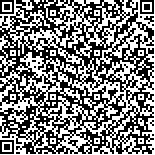| 引用本文: |
来奕恬, 范涵泊, 陈佳晨, 李武, 李江山, 陈恒.推拿按法通过C纤维调控SIRT1/SGK1表达改善痉挛型脑瘫大鼠神经-肌肉功能障碍的机制研究[J].湖南中医药大学学报,2025,45(10):1874-1883[点击复制] |
|
| |
|
|
| 本文已被:浏览 119次 下载 56次 |
| 推拿按法通过C纤维调控SIRT1/SGK1表达改善痉挛型脑瘫大鼠神经-肌肉功能障碍的机制研究 |
| 来奕恬,范涵泊,陈佳晨,李武,李江山,陈恒 |
| (湖南中医药大学, 湖南 长沙 410208;湖南中医药大学第二附属医院, 湖南 长沙 410005;湖南省中西医结合医院, 湖南 长沙 410006) |
| 摘要: |
| 目的 观察推拿按法通过C纤维调控组蛋白去乙酰化酶1(SIRT1)/血清和糖皮质激素调节激酶1(SGK1)分子网络,改善痉挛型脑瘫大鼠的神经-肌肉功能障碍,缓解肌痉挛的机制。方法 将50只SD大鼠随机分为正常组10只和造模组40只,使用无水乙醇损毁锥体束法建立痉挛型脑性瘫痪模型大鼠,造模成功后再随机分为模型组、按法组、按法辣椒素组、按法盐水组,每组10只。按法辣椒素组对左侧坐骨神经使用2%辣椒素去C纤维处理,按法盐水组对左侧坐骨神经使用生理盐水对照处理。按法组、按法辣椒素组、按法盐水组在模型制备成功后第2天起按压左侧小腿三头肌与跟腱连接处的腱器官干预,连续干预14 d。采用改良Ashworth量表评估大鼠肢体痉挛程度,Zea Longa量表评估大鼠神经功能缺损程度,HE染色观察锥体束病理学改变,免疫组化观察锥体束中甘氨酸、γ-氨基丁酸(GABA)含量,Western blot和ELISA检测大鼠海马中SGK1、SIRT1蛋白表达,ELISA检测大鼠脊髓中SGK1、SIRT1、细胞外信号调节蛋白激酶1(ERK1)、腺苷酸环化酶1(ADCY1)、钙/钙调蛋白依赖性蛋白激酶Ⅱ(CaMKⅡ)含量,软组织张力测定器测定大鼠大腿内侧肌软组织张力D0.2 kg数值。结果 干预后,与正常组相比,模型组大鼠改良Ashworth量表、Zea Longa量表评分显著升高(P<0.01),软组织张力D0.2 kg显著降低(P<0.01);与模型组相比,按法组、按法辣椒素组和按法盐水组大鼠改良Ashworth量表、Zea Longa量表评分降低(P<0.05或P<0.01),软组织张力D0.2 kg显著升高(P<0.01)。干预后,与正常组相比,模型组大鼠锥体束中甘氨酸、GABA的AOD值及海马中SIRT1降低(P<0.05或P<0.01),SGK1显著升高(P<0.01),脊髓中ERK、CaMKⅡ、SGK1显著升高(P<0.01),ADCY1、SIRT1降低(P<0.05或P<0.01);与模型组相比,按法组和按法盐水组大鼠锥体束中GABA的AOD值、海马中SIRT1升高(P<0.05或P<0.01),SGK1降低(P<0.05或P<0.01),脊髓中ERK、CaMKⅡ、SGK1降低(P<0.05或P<0.01),ADCY1、SIRT1升高(P<0.05或P<0.01)。结论 推拿按法刺激腱器官可能通过C纤维调控SIRT1/SGK1分子网络,改善痉挛型脑瘫大鼠的神经-肌肉功能障碍,缓解脑瘫大鼠的肌痉挛状态。 |
| 关键词: 痉挛型脑瘫 推拿按法 C纤维 辣椒素 腱器官 组蛋白去乙酰化酶1 血清和糖皮质激素调节激酶1 |
| DOI:10.3969/j.issn.1674-070X.2025.10.010 |
| 投稿时间:2025-04-01 |
| 基金项目:国家自然科学基金面上项目(82374613);湖南省卫生健康高层次人才重大科研专项(R2023166);湖南省自然科学基金面上项目(2023JJ30467);湖南省科技创新计划资助(2022RC1221);湖南中医药大学本科生科研创新基金项目(2024BKS126)。 |
|
| Mechanism of tuina pressing manipulation in improving neuromuscular dysfunction in rats with spastic cerebral palsy via C-fiber-mediated regulation of SIRT1/SGK1 expression |
| LAI Yitian, FAN Hanbo, CHEN Jiachen, LI Wu, LI Jiangshan, CHEN Heng |
| (Hunan University of Chinese Medicine, Changsha, Hunan 410208, China;The Second Hospital of Hunan University of Chinese Medicine, Changsha, Hunan 410005, China;Hunan Provincial Hospital of Integrated Traditional Chinese and Western Medicine, Changsha, Hunan 410006, China) |
| Abstract: |
| Objective To observe the mechanism by which pressing manipulation of tuina improves neuromuscular dysfunction and alleviates muscle spasticity in spastic cerebral palsy (CP) rats through C-fiber modulation of the sirtuin1 (SIRT1)/serum and glucocorticoid-regulated kinase 1 (SGK1) molecular network. Methods Fifty SD rats were randomly divided into a normal group (n=10) and a modeling group (n=40). The spastic CP model was established by ethanol-induced pyramidal tract injury. After successful modeling, the spastic CP model rats were further randomized into a model group, a pressing manipulation group (PM group), a pressing manipulation+capsaicin group (PM+Cap group), and a pressing manipulation+saline group (PM+Sal group), with 10 rats per group. The PM+Cap group received 2% capsaicin to ablate C-fibers in the left sciatic nerve, while the PM+Sal group received saline as a control. The PM, PM+Cap, and PM+Sal groups underwent daily pressing intervention at the tendon organ junction of the left triceps surae and Achilles tendon for 14 consecutive days starting on day 2 post-modeling. Muscle spasticity was assessed using the modified Ashworth scale. Neurological deficits were evaluated via the Zea Longa scale. Pyramidal tract pathology was examined by HE staining. Glycine and gamma-aminobutyric acid (GABA) levels in the pyramidal tract were quantified by immunohistochemistry. SIRT1 and SGK1 protein expression in the hippocampus was determined by Western blot and ELISA. Levels of SGK1, SIRT1, extracellular signal-regulated kinase 1 (ERK1), adenylate cyclase 1 (ADCY1), and calcium/calmodulin-dependent protein kinase II (CaMKⅡ) in rat spinal cord were measured by ELISA. The D0.2 kg value for soft tissue tension in the rat medial thigh muscles was measured using a soft tissue tensiometer. Results After intervention, compared with the normal group, the model group showed significantly higher modified Ashworth and Zea Longa scores (P<0.01) and lower D0.2 kg value (P<0.01). Compared with the model group, the PM, PM+Cap, and PM+Sal groups exhibited reduced Ashworth and Zea Longa scores (P<0.05 or P<0.01) and significantly increased D0.2 kg values (P<0.01). After intervention, compared with the normal group, the model group exhibited significantly reduced average optical density (AOD) values of glycine and GABA in the pyramidal tract, along with downregulated SIRT1 expression (P<0.05 or P<0.01) and markedly upregulated SGK1 expression (P<0.01) in the hippocampus. In the spinal cord, ERK, CaMKⅡ, and SGK1 levels were significantly higher (P<0.01), while ADCY1 and SIRT1 levels were lower (P<0.05 or P<0.01). In contrast, when compared with the model group, the PM and PM+Sal groups showed increased AOD value of GABA in the pyramidal tract, and elevated SIRT1 expression (P<0.05 or P<0.01) while reduced SGK1 expression (P<0.05 or P<0.01) in the hippocampus. In the spinal cord, ERK, CaMKⅡ, and SGK1 levels decreased (P<0.05 or P<0.01), whereas ADCY1 and SIRT1 levels increased (P<0.05 or P<0.01). Conclusion Pressing manipulation of tuina at tendon organs may improve neuromuscular dysfunction and alleviate muscle spasticity in spastic CP rats through C-fiber-mediated regulation of the SIRT1/SGK1 molecular network. |
| Key words: spastic cerebral palsy pressing manipulation of tuina C-fibers capsaicin tendon organ sirtuin1 serum and glucocorticoid-regulated kinase 1 |
|

二维码(扫一下试试看!) |
|
|
|
|




